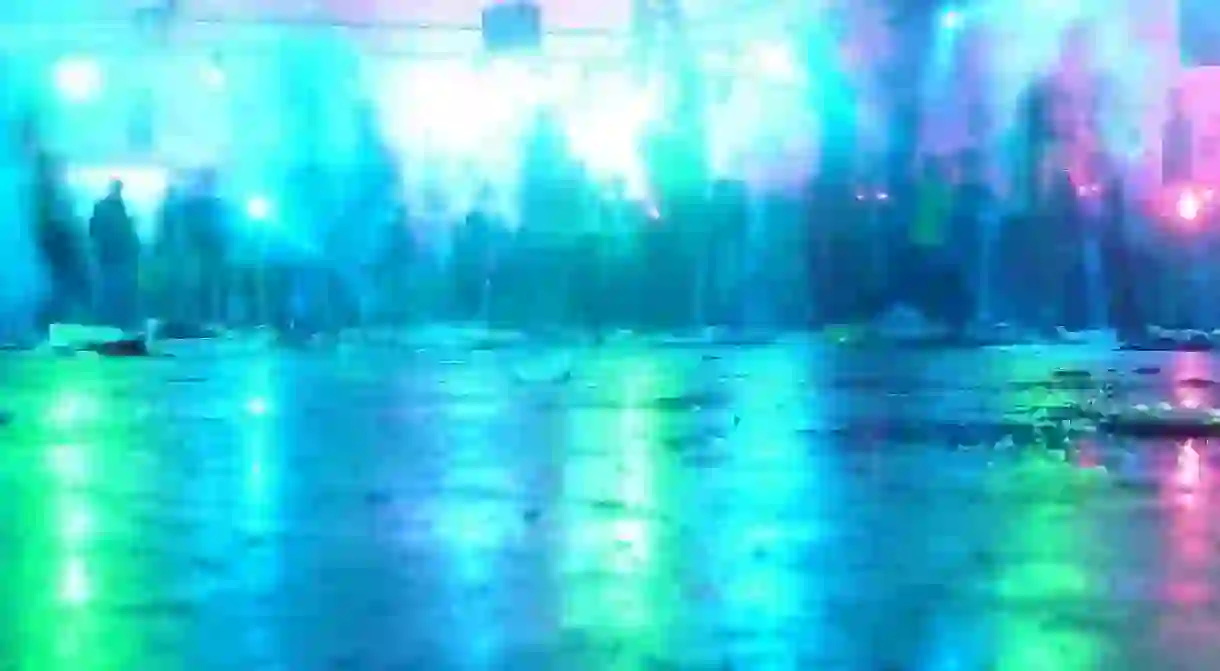Everything You Need to Know About Sónar Festival in Barcelona

At the forefront of electronic music, visual arts and technology, Sónar is one of the largest, most well-respected music festivals of its kind world-wide. Held for the first time in 1994, the festival has since welcomed some of the leading musicians, DJs and visual artists of the era, and we’ve got everything you need to know about Sónar.
The Sónar experience
Attracting over 100,000 festival-goers for a three-day event with live shows pretty much around the clock, Sónar is an intense music experience, to say the least. The festival is divided into two parts: Sónar by Day and Sónar by Night, with both parts held in separate venues from the start of the festival.

Sónar has the peculiarity of taking place in a city meaning that Barcelona itself becomes the festival ground with most guests staying in hotels and tourist apartments across the Catalan capital. Sónar probably couldn’t be the festival it is in any other city but Barcelona, and the event has undoubtedly helped shape the city into the European musical capital it is today.
‘Music, Creativity & Technology’ is the festival’s tagline and indeed many of the acts that play at Sónar are pioneers of the electronic and experimental music world. Since its creation in 1994, the festival has attracted the likes of Björk, Kraftwerk and The Chemical Brothers, but also artists like Grace Jones, The Sugarhill Gang and Pet Shop Boys as well as the leading DJs Laurent Garnier, Miss Kittin, Sven Väth and Nicholas Jaar.

A little background history
Sónar was held for the first time in 1994 and was founded by music journalist Ricard Robles and musicians and visual artists Enric Palau and Sergio Caballero. The first edition of the festival, called Sónar by Day, took place right in the centre of the city at the CCCB (Contemporary Culture Centre of Barcelona) while Sónar by Night was held at the historic Sala Apolo nightclub in Poble Sec.

In the following years, attendance grew from just 6,000 festival-goers for the first edition to some 18,000 two years later, and by the year 2000, some 53,000 people attended the three-day event. Inevitably, the festival was relocated to newer and larger venues to accommodate its exponential growth.
Since 2013—a year that saw 121,000 attendees—Sónar by Night has taken place in a large exhibition hall on the outskirts of Barcelona (Fira de Barcelona) while the Sónar by Day takes place in a smaller exhibition hall near the Plaça d’Espanya (Fira Montjuïc). The main stage for the night event, Sónar Club, can hold a whopping 15,000 guests—some 5,000 more than the world’s largest night-club, Privilege Ibiza.

The impact on the city’s economy hasn’t been negligible either, with the festival contributing some €43 million ($52 million USD) to the GDP of Catalonia in 2007, according to a study by Deloitte. Hotel occupancy in Barcelona in the days leading up to the festival is above 80% on average. The festival has become a major event on the Barcelona cultural calendar, attracting guests from every corner of the globe.
Off Sónar week
Another remarkable feature of Sónar is the fact that the party doesn’t only take place during the festival: every club, late-night bar and music venue in Barcelona becomes part of a continuation of the Sónar experience. Known as the Off Sónar, this week-long unofficial program of events often features the same acts that play at the festival in smaller venues across the city.
By no means a distraction from the main event, Off Sónar is both a warm-up and an after-party for the festival. It also means you may have the chance to catch your favourite acts again or catch up with those you missed. Night clubs such as Moog, Razzmatazz and Sala Apolo usually have the most interesting programs but it’s worth checking out smaller venues too for up-and-coming acts.

What to expect at Sónar
There’s no denying it: Sónar is big, Sónar is loud and Sónar is crazy. Shows go on until at least 7 am for Sónar by Night and things kick off again starting at 1 pm for Sónar by Day, and while most festival goers don’t hold themselves to this drastic schedule, many do.
With 100,000 guests attending the festival, most of them coming in from outside Barcelona, the city is very much in party mode during Sónar. The city’s bars, restaurants and beaches will be busy so you’ll want to book well in advance where possible.
Because the festival attracts a rather eclectic crowd, it’s often hard to pinpoint what your average Sónar festival-goer looks like, though you will see many late twenty-somethings and early thirty-somethings, mostly urban types, with a penchant for late-night raves and early electronica.














